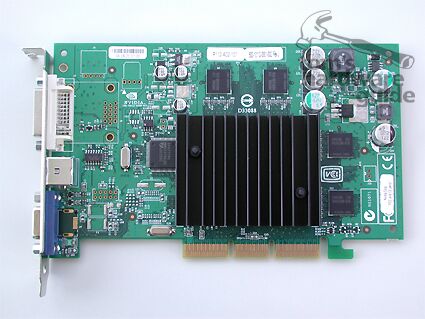NV18 & NV28: NVIDIA Chips with AGP-8x Flavor
Introduction
Simply put, the graphics card market is divided into two large segments. One is the retail segment, which provides its customers, the do-it-yourselfers, with a single card packaged in a colorful box along with some nice extras like games. The other is the much more lucrative OEM market for off-the-shelf PCs. This second segment is definitely the more interesting one for card and chipmakers alike. After all, when a company like Dell or Gateway decides to use a certain card in one of their product lines, it means an order of several thousand cards right there. This is exactly the market NVIDIA is targeting with its refreshed GeForce4 chips NV18 and NV28. AGP 8x is the new buzzword in the OEM market and therefore the next "must-have" feature as well. After all, 8x is twice as much as 4x - right? Alright, frown if you will, but this kind of argument may well win over some first-time buyers looking through their home-order brochures.

The MX440-8x now uses the newer and faster BGA memory. Although NVIDIA's reference board only used a passive heatsink to cool the chip itself, the cardmakers will surely not pass up a chance to visually "tune" their cards by including an impressive looking fan.
It is hardly surprising, then, that only the two best-selling cards in NVIDIA's line-up, the budget GeForce4 MX440 and the slightly pricier Ti4200, are being treated to the newer and faster bus interface. The new versions of these chips will be called MX440-8x (NV18) and Ti4200-8x (NV28). Rumors about these revisions have been making their way through the net for a while now - ever since ATi's introduction of the Radeon 9000 PRO, to be exact. Suddenly, those companies that chose ATi's chips were able to cash in on the advertising hype around AGP 8x, leaving NVIDIA's partners stuck at "only" AGP 4x. Like it or not, in the world of OEM sales this is a clinching argument.
Now NVIDIA is trying to close the gap - and just in time for the holiday season, too. A bit early? Not really, considering the contracts with OEMs are inked a long time before the actual systems using the card will be sold.

The new Ti4200-8x reference board shows now outward change from its predecessor. Only the name on the chip itself gives the version away.
Beyond the switch to AGP 8x, NVIDIA has also cranked up the clockspeeds of the MX440 -8x. Instead of running at 270 MHz (GPU) and 400 MHz DDR (memory), the new cards are set to 275/500 MHz. The Ti4200-8x remains unchanged at 250/500 MHz for the 64 MB version. Interestingly, the memory of the reference cards supplied by NVIDIA for testing ran slightly faster, namely at 512 MHz (NV18) and 514 MHz (NV28). Officially, both cards are being advertised as using a memory clockspeed of 500 MHz, though.
Get Tom's Hardware's best news and in-depth reviews, straight to your inbox.